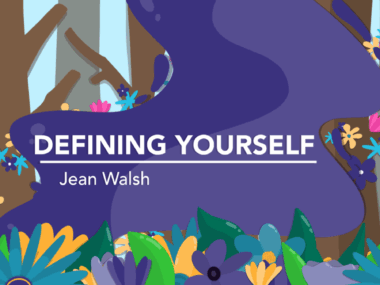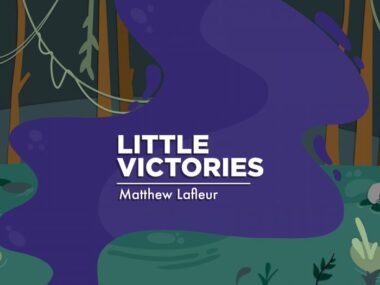A new perspective on circular time: Introducing Matt’s Rare Journey
Finding hope and resilience in the patterns of life with FA
Written by |

“Time is a flat circle. Everything we’ve ever done or will do, we’re gonna do over and over and over again … forever.” — Rust Cohle (Matthew McConaughey), the pessimistic and existential homicide detective in “True Detective”
Based on philosopher Friedrich Nietzsche’s doctrine of eternal recurrence, Cohle’s outlook is that much of life is repeating patterns, and in his case, these patterns remain bleak forever.
The idea of flat, circular time seems accurate to me. However, I see existence from a different perspective from Cohle’s. While patterns often repeat, existence is not bleak and hopeless. Instead of an inescapable nightmare, the patterns in my life feel more like déjà vu or serendipity. More accurately, they allow for resilience.
The pattern of Friedreich’s ataxia
Since I was diagnosed with Friedreich’s ataxia (FA) at age 9, my physical capabilities have trickled away a little more each day. Even though I hoped and strove to maintain these abilities, doing so was like holding on to sand with a loose fist.
When I could no longer play sports in middle school, when I failed my driver’s test due to poor coordination, when I sat in a wheelchair for the first time, when I first installed a shower chair in my bathroom, when I kept getting rejected from counseling jobs … all of these blows felt devastating, yet familiar.
Time is a flat circle.
Depression followed these transitions, and most people with FA have probably had similar experiences. Loss of function is a sad song we know too well.
“How can I move on when this hurts so much?” I ask myself more often than I’d like to admit. In these moments, Cohle’s philosophy of the hopeless redundancy of life is relatable. However, life’s repetition does not mean it’s hopeless.
I’ve been working for many months on a project detailing my survival with Friedreich’s ataxia, and I’m incredibly proud of how it turned out. At first, I was very apprehensive about driving myself and my family back to those painful childhood memories. I even considered calling it quits instead of facing that monster. Thankfully, I kept going and learned firsthand that the cyclical nature of our hardships is a way for us to gain resilience.
What I learned from sharing my rare journey
I first met Alex Coletta, a product and marketing leader in the digital health space, in New Jersey, in the spring of 2022. I wanted to persuade him to work at Bionews, the parent company of this website and where I work.
I guess it was a successful meeting, because on a video call this year, Alex, now my co-worker, told me, “I have a crazy idea for a new project.” He explained that a notable statistic from a 2024 survey taken by visitors from all 50-plus websites published by Bionews, including Friedreich’s Ataxia News, showed an overwhelming interest in more content from patients. Alex’s idea was to tell a patient’s story of and beyond diagnosis using several forms of media, including text, photo, video, audio, and interactive elements like quizzes. He termed this project “immersive.”
Little did he know that even though the project seemed incredible, I’d been on board since he called it a “crazy idea.”
The next few months were a barrage of exploring my past, from writing down my story and finding old photos and home movies, to sitting for an interview alongside my dad. Reflecting on my journey, I was struck by a realization.
Even though it was painful to open up about these dark times, I noticed a pattern in my lowest points — searching the early internet for any sign of hope in life with FA, transitioning to a wheelchair and shower chair, accepting that I needed a caregiver, etc. I struggled with transitions over and over and over again.
Yet something else repeated as well: resilience. Each time a new challenge or disability emerged, I found a way to keep moving forward.
And I’m not special; resilience is possible for all of us.
If similar events happen over and over, we can learn to trust our adaptability. If we survived when we didn’t think we could before, we can do it again. Maybe we can learn from the past and do it better the next time.
Thank you to my family, especially my sister Morgan and my dad, for being a part of this project. Thanks to Alex for his crazy idea. Thanks to Ryan, Jeff, Kellie, Ethan, Chris, and my many other co-workers for their help and support.
When I was 15, I scoured the internet for any glimmer of hope in life with FA. Almost two decades later, I worked with some people I love to make an immersive website to encourage FA patients not to give up.
Time is a flat circle.
You’re invited to check out Matt’s Rare Journey.
Note: Friedreich’s Ataxia News is strictly a news and information website about the disease. It does not provide medical advice, diagnosis, or treatment. This content is not intended to be a substitute for professional medical advice, diagnosis, or treatment. Always seek the advice of your physician or another qualified health provider with any questions you may have regarding a medical condition. Never disregard professional medical advice or delay in seeking it because of something you have read on this website. The opinions expressed in this column are not those of Friedreich’s Ataxia News or its parent company, Bionews, and are intended to spark discussion about issues pertaining to Friedreich’s ataxia.






Leave a comment
Fill in the required fields to post. Your email address will not be published.